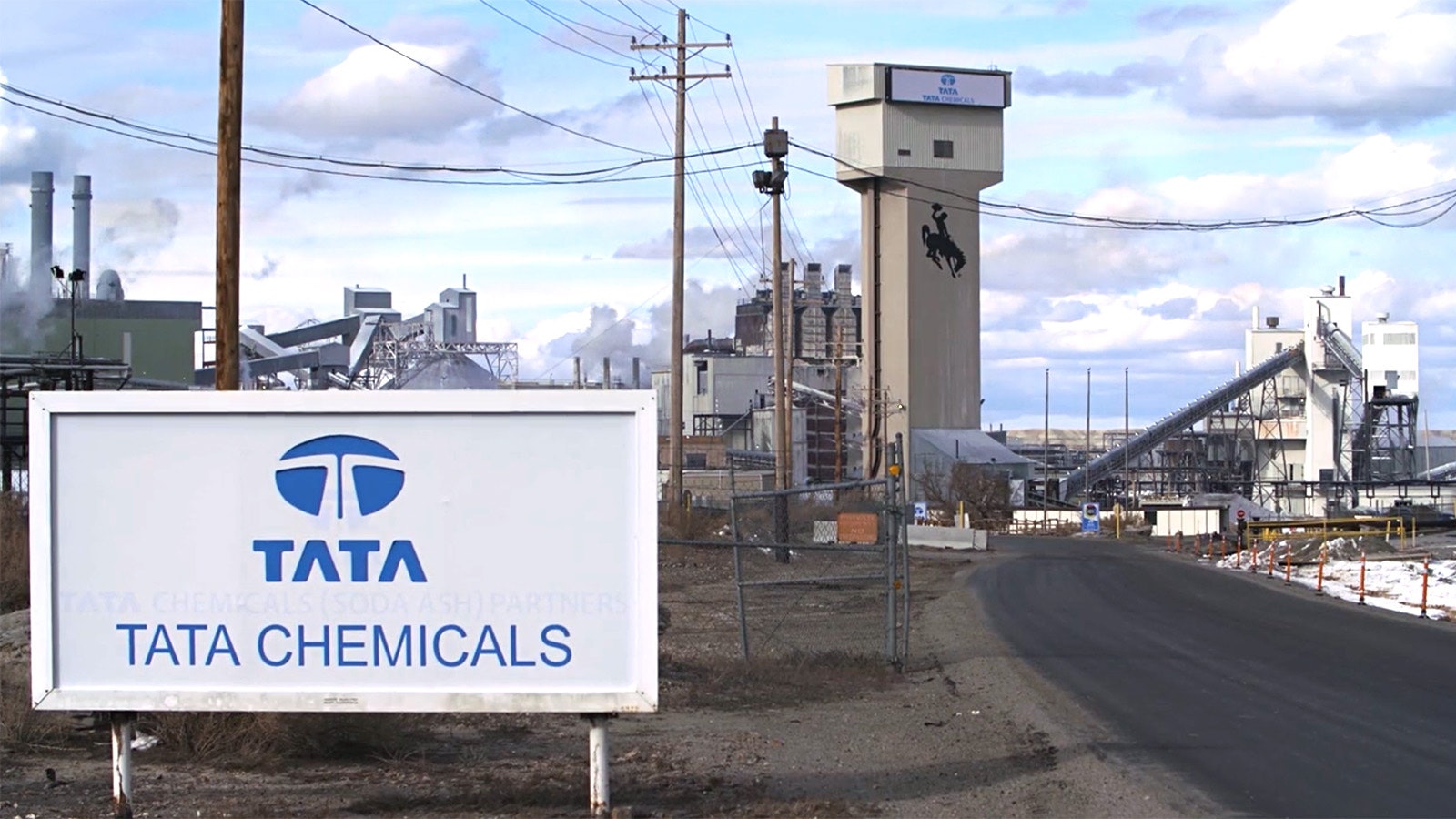Wyoming’s largest trona producer is teaming up with a nuclear energy technology company to study setting up small-scale nuclear reactors to support its manufacturing facility in Green River. The technology could provide a lot of low-cost, carbon dioxide-free energy to power the trona mine.
On Thursday, Tata Chemicals announced it has signed an agreement with BWXT Advanced Technologies to pursue development of nuclear reactors that will produce up to 100 megawatts of electricity for the Tata facility to supplement its existing power generation efforts.
Jon Conrad, a representative of Tata and a state legislator, said the agreement is first-of-its-kind in that small-scale nuclear reactors have never been used to power an industrial facility before in the United States.
“We’re the first in the nation to pursue such technology,” Conrad said.
For comparison, the planned TerraPower advanced nuclear reactor in Kemmerer would produce about 345 megawatts of electricity. The Dave Johnston coal-fired power plant near Glenrock produces up to 800 megawatts of electricity.

How It Works
Nuclear plants typically focus on providing electricity for the mass electrical grid to power cities and towns.
For example, the most of the power produced at TerraPower will be used by Rocky Mountain Power on the general electric grid. The small-scale nuclear reactors in Thursday’s announcement will be focus on Tata’s facility. Conrad said there is potential the nuclear reactors will lower carbon emissions and energy costs for the facility and supply all of its power needs.
Because they are typically located in remote locations, microreactors don’t necessarily need a lot of transmission lines and other infrastructure to support them.
Most of the current industrial heating is created through the burning of fossil fuels because it's much more efficient than using electricity to create heat. The byproduct of nuclear fission is heat, which is then converted into steam and used to power generators.
Who’s On Board?
BWXT Advanced Technologies is a Virginia-based company developing micronuclear reactors that produce carbon-free energy. Earlier this year, it was awarded a contract to build a small reactor unit for Japanese electronics company Hitachi.
The Wyoming Energy Authority supports the Tata agreement.
“One of our main goals in developing a nuclear energy industry in Wyoming is to be able to support our own in-state end users and industries,” said Rob Creager, executive director for the Wyoming Energy Authority in the press release. “With the demand for power only expected to increase, we need to support Wyoming’s industries to remain competitive in a global market.
“In some situations, more is more, and nuclear power has tremendous potential to add value to Wyoming’s energy portfolio.”
The Wyoming Legislature in 2022 and 2023 appropriated a total of $150 million to Gov. Mark Gordon’s office to provide matching funds for energy research projects.
BWXT was recommended to receive $10 million, which the company will match with another $10 million.
The money covers two projects that will assess the viability of deploying microreactors in Wyoming and investigate how the reactors could integrate into Wyoming’s future power needs.

No Timeline Yet
The work under the Tata agreement will support the Energy Authority’s cooperative cost share agreement with BWXT that was recommended for approval earlier this summer and formally announced by BWXT earlier this month.
“This cooperation agreement with Tata Chemicals Soda Ash Partners LLC represents a clear signal that the Wyoming Energy Authority’s efforts to stimulate public-private partnerships is working,” said Joe Miller, BWXT Advanced Technologies LLC president, in the press release.
Creager told Cowboy State Daily earlier this month that the company also isworking with L&H Industrial in Gillette to look at having the Wyoming company manufacture components for BWXT’s microreactors.
Tata’s manufacturing facility consists of an underground trona mine and a surface refining plant that processes the ore into soda ash. The facility operates around the clock, seven-days a week, 365 days per year and mines more than 4.5 million tons of trona ore per year.
Under the terms of the agreement, Tata and BWXT will work together to identify the company’s energy needs in Wyoming, progress BWXT’s microreactor development for these energy needs, and develop a preliminary business plan for the deployment and long-term operation of power and heat cogeneration sets at the Green River facility.
Conrad said there has been no cost estimate developed for building the nuclear reactors or timeline established for how quickly they could be up and running. A large conventional nuclear reactor started operating in Georgia earlier this year after construction started on that project in 2009.
Leo Wolfson can be reached at leo@cowboystatedaily.com.





